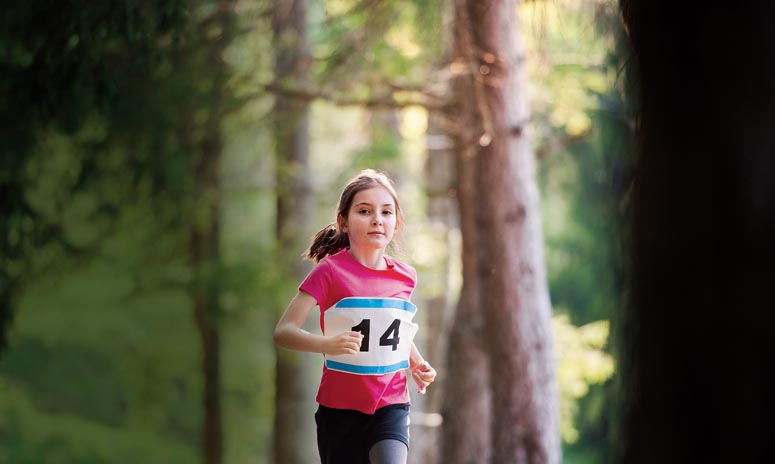We have covered the psychosocial aspects of physical literacy and development of young girls in my previous article. This article will discuss various methods to improve physical literacy across maturation in young girls. As discussed in the previous article, chronological age may not provide insights into individual growth and maturation in boys and girls. Therefore, using peak height velocity (PHV) as a reference may be a better way to individualise physical training in youth.
The PHV calculation can help provide a training stimulus that is biologically more appropriate. PHV for girls can be calculated using Mirwald et al. (2002) equation: Maturity Offset for girls = -9.376 + 0.0001882 x leg length and sitting height interaction + 0.0022 x age and leg length interaction + 0.005841 x age and sitting height interaction -0.002658 x age and weight interaction + 0.07693 x weight by height ratio.
Three categories can be used for PHV a) Pre-PHV: Years before peak height velocity or puberty; b) Mid-PHV: Around peak height velocity or puberty; and c) Post-PHV: after peak height velocity or puberty.
In addition to biological growth and maturity, it is also important to consider the training age of a young girl (exposure to physical activities). For example, if we have a group of 10 girls from seventh standard (11-12 years of age), they might be different with regards to biological growth and training age (due to exposure). Therefore, expecting everyone to move and perform the same way in a sport or a physical activity is not right.
Similarly, a comprehensive physical literacy programme should be individualised to biological and training age of a girl. This should include several aspects of training, including cognitive development of movement such as anticipation and decision-making skills, physical competency in mobility, strength, power, speed, agility and cardio-respiratory fitness along with semi-structured and unstructured play for enjoyment and encouraging creativity in this cohort.

Post-PHV girls can specialise in one sport (if competing) but for social aspect they should still participate in another sport and/or physical activity Sourced by the correspondent
Pre-, mid- and post-PHV phases
During pre-PHV phase, a broad movement base, including fundamental movement skills, such as sprinting, jumping, hopping, skipping, throwing, swimming, tumbling should be emphasised without much structure. This is the time when the nervous system is rapidly developing. Furthermore, pre-PHV girls should also be encouraged to participate in multiple sports and physical activities. Emphasis during this phase should be on learning new skills, making friends, and having fun with minimal competition and outcome focus. The greater the movement vocabulary (arsenal of movement) during this phase the more resilient a young girl would transition into the later stages, particularly during puberty.
The mid-PHV phase is one of the most challenging times for young girls. There are a lot of changes psychologically and physically during this stage due to puberty. The adipose tissue and fat mass increases, and many activities tend to be challenging due to the negative changes in power-to-weight ratio. This phase can be more challenging for girls who have not been exposed to different physical activities and sports during pre-PHV as the inhibition is lot more in participating in physical activities. This is also the time that a lot of non-contact injuries tend to occur as the bones tend to grow faster than muscles and tendons. Therefore, the emphasis during this phase should be on developing sound movement skills, increasing strength and power relative to bodyweight, improving cardio-respiratory fitness and lean muscle mass along with semi-structured and unstructured play. With regards to sports, specialisation in one sport is still not recommended. Furthermore, girls that participate in individual sports, such as long-distance running, should also play a team sport such as basketball or football for social interaction, understanding team dynamics and exposure to different movement skills but not necessarily compete.
The post-PHV phase can include more structured work compared to pre- and mid-PHV phase, provided a girl has gradually transitioned through the previous phases. This is the time that girls will need to manage their academic and social life along with sports and physical activity. With regards to sports, post-PHV girls can specialise in one sport (if competing) but for social aspect they should still participate in another sport and/or physical activity. More structured work with regards to mobility, strength, power, speed, endurance training can be utilised during this phase. However, each structured training should also have an element of fun and semi/unstructured play. Post-PHV girls mustn’t be treated as mini adults. Therefore, creating an environment that encourages young girls to express without being judged, foster positive attitude towards life and develop meaningful relationships while improving their physical literacy is crucial for long-term physical literacy and development.
Kaushik Talukdar is founder and CEO of Athlete Institute (www.athlete.institute) and a PhD scholar (Sports and exercise science). You can reach him at kaushik@athlete.institute or tweet him @coachkaushik











